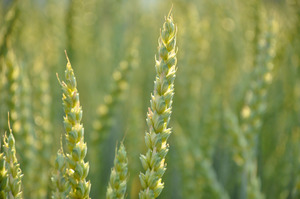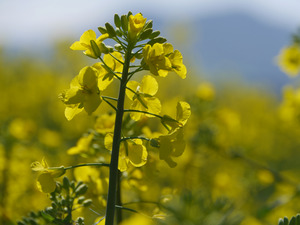Focus crops
In PRO-WILD, the focus lies on wheat, sugar beet, and oilseed rape, as they represent major crops in Europe, selected for their economic and agricultural significance. The aim of this project is also to serve as a template for other crops of significant economic and environmental value grown in Europe (e.g. Fabaceae species such as peas and lentils). To support this, the stakeholder committee will represent a broader community beyond the three focal crops.
Wheat

Wheat is composed of various species, including bread wheat (Triticum aestivum) and durum wheat (T. turgidum ssp. durum) which are the two most widely cultivated. Bread wheat is primarily used for bread and biscuits, while durum wheat is essential for pasta and semolina production. These species are closely related, as bread wheat originated from a cross between tetraploid T. turgidum and Aegilops tauschii about 9,000 years ago.
Wheat is strategically important for food security in Europe and globally. The European Union is one of the world’s largest producers and exporters of wheat. However, while production increased steadily from the 1960s, this growth has slowed, and many countries have seen grain yield stagnation since the late 1990s. Contributing factors include changes in agricultural practices, less favourable climatic conditions, including stress from heat and drought or flooding during key growth stages. In addition, diseases and pests are estimated to reduce global wheat production by around 13% annually.
One avenue for addressing these challenges involves characterising the genetic diversity contained in wheat's wild relatives such as Aegilops, Dasypyrum, Elymus, Thinopyrum, and wild Triticum, which have shown potential for developing stress-tolerant and high-quality varieties, and exploiting this diversity in breeding programs.
Oilseed rape

Brassica crops, or cruciferous vegetables, include several species that are valued for their nutritional and medicinal benefits. Oilseed rape (B. napus, tetraploid) is the second most cultivated oilseed worldwide and the leading oilseed in Europe. It is a hybrid of two diploid species: B. rapa and B. oleracea. Unlike its parental species, oilseed rape has limited genetic diversity due to reproductive barrier induced by the hybridization and a recent high selection pressure for seed quality.
Commonly cultivated diploid Brassica species include turnip (B. rapa), broccoli (B. oleracea var. italica), cauliflower (B. oleracea var. botrytis), cabbage (B. oleracea var. capitata), Brussels sprouts (B. oleracea var. gemmifera) and kale (B. oleracea var. sabellica). The importance of these crops for food security is increasingly recognised, highlighting the need for resilient farming systems. However, Brassica production faces challenges such as sub-optimal sowing conditions due to climate change and the resurgence of pests, particularly flea beetles. Heat stress and biotic stresses are major contributors to yield losses.
A wide diversity of the Brassica species is present in Europe and it is crucial to protect and characterize wild populations of B. oleracea and its relatives, many of which are threatened and under-represented in genetic resource centres. The crop wild relatives of Brassica species thus offer a promising source of diversity for improving the resilience of cultivated Brassica crops to abiotic and biotic stresses.

Sugar beet
Beets are classified into three sections, with the crop and several wild relatives (B. vulgaris ssp. maritima, B. vulgaris ssp. adanensis, B. macrocarpa, B. patula) belonging to section Beta. Species and subspecies within this section can freely interbreed with the crop and typically have diploid genomes. Recently, the sequenced genomes of several cultivated and wild beet accessions have become available, making it possible to analyse the beet genome.
Cultivated beets (Beta vulgaris ssp. vulgaris) include sugar beet, the most important sugar crop in Europe and the second most important in the world, fodder beets for animal feed, and table beets and chard as important vegetables. Sea beet, the ancestor of all beet crops, is native to the European coastlines along the Atlantic Ocean and the Mediterranean Sea, where wild accessions can also be found. However, many of these accessions in ex-situ repositories lack clear taxonomic descriptions, leading to confusion between species and subspecies.
Beet breeding faces challenges such as emerging diseases linked to changes in vector insects or pathogens overcoming host defences. In addition, abiotic stresses such as drought significantly affect beet yields. Wild beets represent an untapped resource for breeding genetic resistance. Focusing on beet CWRs will significantly enhance breeding efforts by providing molecular access to new genes and alleles, thereby promoting the sustainability of beet crops in a changing environment.
 tap and then scroll down to the Add to Home Screen command.
tap and then scroll down to the Add to Home Screen command.